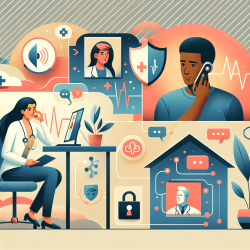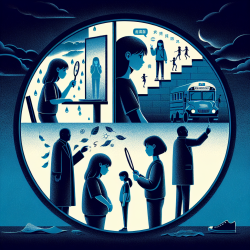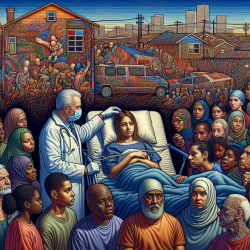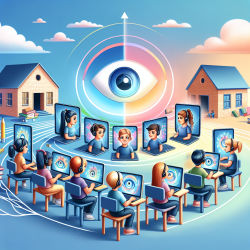Introduction
The COVID-19 pandemic has reshaped the landscape of education and healthcare, prompting a reevaluation of how we engage with and support students and professionals alike. A recent study titled "Life during the pandemic: an international photo-elicitation study with medical students" provides valuable insights into the experiences of medical students worldwide. This study utilized a modified photo-elicitation methodology to explore the multifaceted impact of the pandemic on students' lives. As practitioners in the field of speech-language pathology, there are lessons to be learned and strategies to be adopted from this research to enhance our practice and improve outcomes for children.
Understanding the Study
The study involved 26 medical students from 19 schools across 13 countries, who shared photographs and reflections over a two-week period. The analysis revealed impacts at various levels: individual, interpersonal, educational, and societal. Students experienced emotional distress but demonstrated resilience through new routines and physical activity. Interpersonal relationships were strained due to social distancing, yet educational initiatives provided some relief through structured learning and virtual collaboration.
Applying Insights to Speech-Language Pathology
As speech-language pathologists, particularly those providing online therapy services like TinyEYE, we can draw parallels between the experiences of these medical students and the challenges faced by children during the pandemic. Here are some actionable insights:
- Emotional Resilience: Encourage children to express their feelings through creative outlets, such as drawing or storytelling, similar to how photo-elicitation allowed medical students to process their experiences.
- Routine and Structure: Establish consistent therapy schedules and routines to provide stability and predictability for children, mirroring the benefits students found in structured educational activities.
- Interpersonal Connections: Facilitate virtual group sessions or peer interactions to combat isolation and promote social skills, much like the collaborative educational initiatives that supported medical students.
- Adaptation to Technology: Leverage technology to create engaging and interactive therapy sessions, ensuring accessibility and minimizing the digital divide, as seen in the educational adjustments made by universities.
Encouraging Further Research
The study highlights the potential of photo-elicitation as a research tool to gain deeper insights into personal experiences. Speech-language pathologists are encouraged to explore similar methodologies to understand the unique challenges and triumphs of children in therapy. By doing so, we can tailor our approaches to better meet their needs and foster positive outcomes.
Conclusion
The COVID-19 pandemic has underscored the importance of adaptability and resilience in both education and healthcare. By learning from the experiences of medical students and applying these insights to speech-language pathology, we can enhance our practice and support the well-being of children. To read the original research paper, please follow this link: Life during the pandemic: an international photo-elicitation study with medical students.










